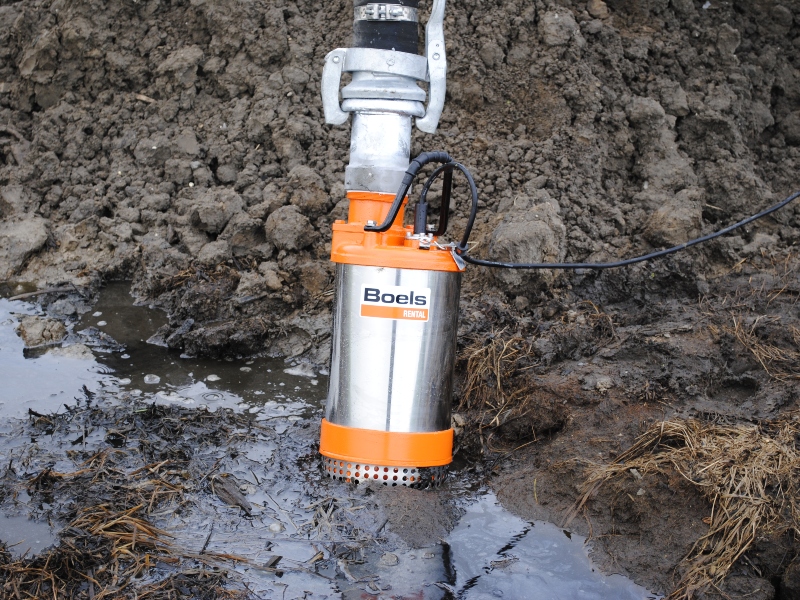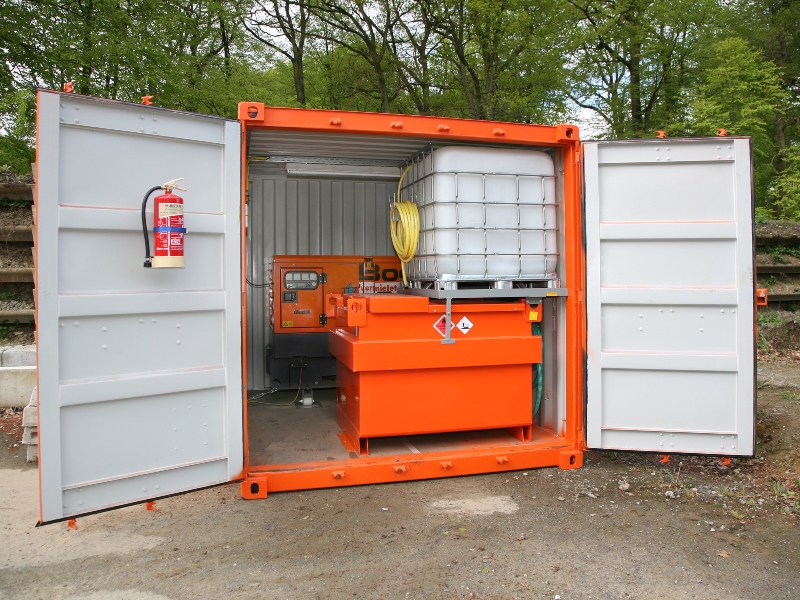We are seeing and reading about a growing number of severe storms and excessive rainfall. Strong winds and extreme precipitation in a short period of time can pose quite a challenge for construction sites. How can you prevent delays in your project due to flooding and limit the property damage that could result from a major storm? The answer is obvious: be prepared and take the right precautions early.
Autumn is here, the season that has historically seen a lot of rain and wind. We put on raincoats and boots and continue with our work undeterred. That’s the way it always used to be, but with the changes in the weather, that time has now passed. It is becoming more and more important to check weather forecasts on a regular basis. Pop-up showers can - just as the name suggests - pop up quite suddenly and completely drench a construction site with rainwater in a very short period of time. When this kind of heavy rainfall is in the forecast, construction sites can be turned into a challenging environment. Without the proper precautions, flooding, property damage and project delays can occur. We’d like to share some tips with you on how to prepare construction sites for impending wind and rain.

Ensure proper drainage of the construction site
Effective drainage is essential for protecting construction sites from heavy rainfall. If the terrain does not have enough slope for natural drainage, we will need to help it along to reduce the risk of flooding. When puddles begin to form on the construction site and the ground becomes too soggy, it is often impossible to properly walk or drive equipment and trucks over it. That is why it’s wise to make adjustments to the construction site well in advance, by creating trenches for drainage, for example, to divert excess water to a nearby ditch or into a temporary well. These drainage channels can be dug out quickly using a trencher. It is possible to rent this kind of trencher of course, which allows proper drainage to be created on construction sites in a short time.
Drainage channels can be dug out quickly using a trencher

Earthwork to prevent instability
If the soil is allowed to saturate with rainwater during a pop-up shower, an unstable situation can occur. The same applies to embankments, ramps and similar structures. Sometimes it even makes sense to reconsider the slope of soil bodies and reduce the degree of penetration by improving the soil. For example, it may be necessary to apply a layer of aggregate to strengthen the soil (gravel) due to heavy rainfall and marshy soil. On the one hand, this helps stabilise the site and on the other it improves water drainage. A compact excavator, wheel loader or tracked dumper can be used to quickly take care of these adjustments and stabilising measures. This equipment is available for short-term hire, so that doesn’t have to be an obstacle.
Make sure you have enough storage areas
Strong winds and heavy rains can cause serious damage to items such as construction materials, tools and equipment if they are not properly stored or otherwise protected from the elements. While a warehouse is ideal, using storage containers – which can also be hired – is also an effective solution that protects all kinds of materials and equipment from the weather. They also come with the added benefit that they significantly reduce the risk of theft or vandalism. Be sure to place them in a sensible location, such as on top of firm soil and preferably not at the bottom of an embankment or slope due to surface runoff.

What if preventive measures aren’t helping?
Of course, there is always the chance that preventive measures will fail to provide enough help, leaving parts of the construction site flooded. In these cases, it is useful to have one or more sludge pumps handy, for example. This equipment allows you to quickly remove water from trenches and other sunken areas. Working outside in low temperatures is also no picnic. When permanent heating is not available, hiring heating units may be necessary to warm up and maintain the temperature of the location. Heating units can also come in handy for protecting (stored) building materials and keeping them dry. In the latter case, dehumidifiers are also great for removing excess moisture from indoor spaces and speeding up the drying process of building elements.
